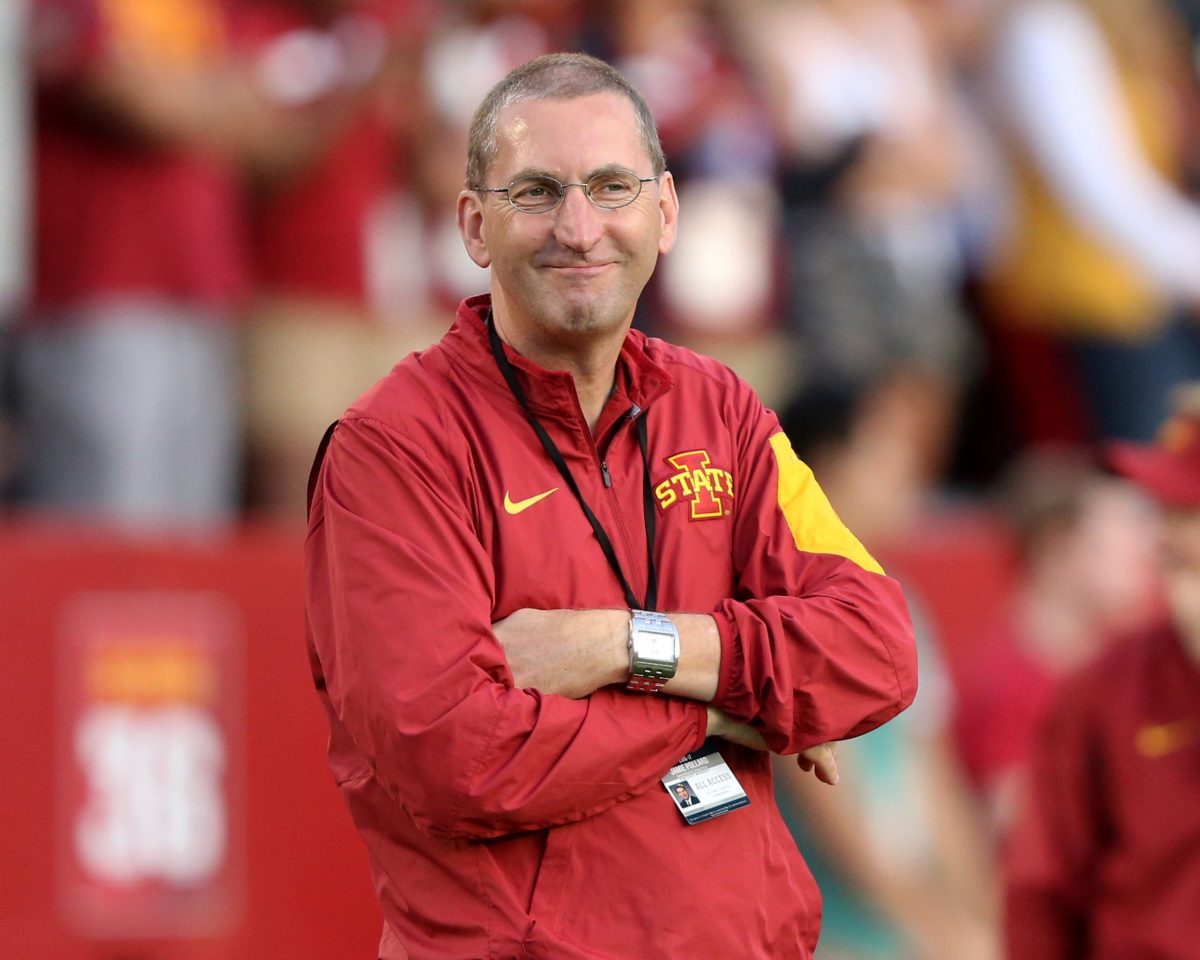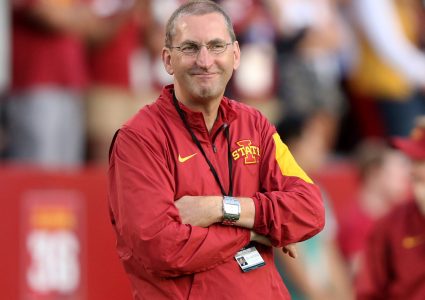Sep 3, 2016; Ames, IA, USA; Iowa State athletic director Jamie Pollard watches the Cyclones pregame warmups for their game against the Northern Iowa Panthers at Jack Trice Stadium. Mandatory Credit: Reese Strickland-USA TODAY Sports
Jamie Pollard knows what it is like to wonder, ‘What if?’
Iowa State’s Director of Athletics has often thought about what could have been had he utilized his final year of collegiate eligibility during a standout long-distance running career at UW-Oshkosh, which had culminated with a Division III national championship in the 5,000 meter run at the 1987 NCAA championships. Instead of taking advantage of his fifth-year of eligibility gained by taking a redshirt due to injury as a freshman, Pollard started to focus on his career, which has proven to be a lucrative decision considering he’s regarded as one of the nation’s best college athletic directors.
But still, what if?
So, that’s why when Pollard was sitting in New York City a few weeks ago serving on the NCAA Tournament selection committee, congregated with some of the nation’s foremost leaders in collegiate athletic decision making, the thought of ‘what if’ started to cross his mind. But, this time, the thought was not about his college career that had ended more than 30 years ago, but the careers of the student-athletes who would be impacted by the NCAA’s decision to suspend all spring competition due to the COVID-19 pandemic sweeping and changing the world as we know it.
“We all recognized the severity of what we were talking about. We had a lot of downtime as things were happening even around us,” Pollard told the media on Thursday during a teleconference announcing major changes to the financial future of Iowa State athletics. “As we kinda just were talking about that, we got this notion of this is bigger than basketball. This really involves spring sports. If we’re doing it with the spring sports, what are we doing with all those student-athletes in those sports?”
This was how Pollard became one of the leading decision-makers pushing for a new rule, or exemption, voted in by the NCAA Division I Council earlier this week, granting an extra year of eligibility to every athlete who participates in a spring sport.
“I’m glad that as an industry, that we decided to do it,” Pollard said. “What the rule change allows is for every single athlete in one of those spring sports to have their clock extended. What that means is currently you have five years to do four years of competition. What the rule change allows is there now to be six years to do four years of competition.”
This same rule also allows seniors impacted by the cancellation of spring activities to return to school on the same scholarship they would have received this season while not counting towards the program’s scholarship number.
From an Iowa State perspective, this means 27 senior student-athletes across four sports, and six programs of men’s and women’s track and field, men’s and women’s golf, women’s softball and women’s tennis, will have the opportunity to return to school and compete for one more season.
But, there are still some underlying complexities of this situation. For instance, if all 27 of those athletes do decide to return for another year of competition, it will still be an undetermined number of scholarships (because most of the spring sports award partial scholarships) that will be paid for by the athletic department.
From the perspective of each individual student, not all of those 27 athletes are in a position where they would have been returning to school next year. Some may have been preparing to accept jobs and moving on with their lives or going to graduate school at another institution.
Each individual student-athlete’s situation is going to be different. For someone like Edwin Kurgat, a multiple-time national champion long-distance runner, who would only be eligible to run outdoor track and field, it might be a difficult decision. For an athlete like Sami Williams, perhaps the most decorated Iowa State softball player of all-time, it could also seem like a no-brainer on paper.
“What we’ll be doing is working with those seniors to figure out which ones want to try to come back,” Pollard said. “It will be 27 individual discussions. I hope all 27 can do it.”
In the end, for Pollard, and most people who care about college athletics, this came down to doing right by the student-athletes who have poured their blood, sweat and tears into athletic careers that were nearly cut short by things out of their control.
It is a situation tailor-made of that always lingering question in the back of someone’s mind. The question that still lingers in Pollard’s mind 33 years later and he hopes to help student-athletes avoid.
What if?
“Hey, I’ve got a great job, I’m paid extremely well, I wouldn’t change anything about my life, but if there was one thing, one thing I wish I could do over, it’s suit up one more time as a student-athlete, be in the locker room with my teammates, compete at a conference championship, compete at nationals and all the money in the world can’t buy that for me,” Pollard said. “I have that perspective today as a 55-year-old. Sometimes when you’re 22, you don’t have that perspective. I’ve challenged our seniors and our student-athletes to not throw away what you might not be able to get back. That’s why I fought for that. I put myself in their shoes. I don’t want them 30 years from now to go, ‘I wish I could have.’”



